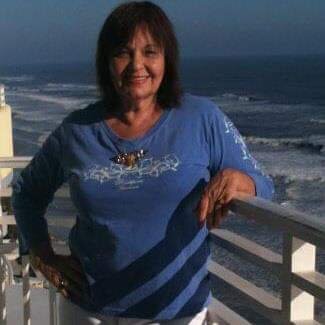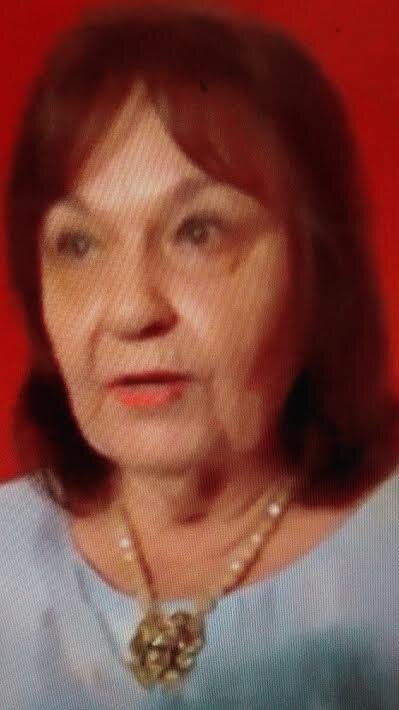Growing up in a library: An essay by Carolyn Rhodes.
“Carolyn is a creative writer. She takes you places and to historic events while growing up living inside two New York Public Library apartments. It is a page turner from beginning to end. It is a true upbeat story that only a library girl could have experienced.”
About the Author
Carolyn Rhodes earned her B.A.in Dramatic Arts and Dance, College of Staten Island, New York City, 1973. She wrote, directed, and choreographed her first screenplay and performed in Lincoln Center. Carolyn maintained her dance skills and picked back up again after retirement from University of Alabama (UA) as an exercise instructor, Osher Lifelong Learning Institute (OLLI) on campus. Her writing credits, (over one hundred essays, articles and reviews) Birmingham Arts Journal; The Executive, UA Alumni Magazine feature writer; Travel Editor, Prime LifeStyle of Alabama; Press Reporter, Consumer Electronics show(CES)reviewer of tech devices and products. Carolyn maintains two blogs and a website for her book, www.librarygirlsofnewyork.com. She can be reached at writegems@gmail.com . Carolyn lives in Tuscaloosa, Alabama.
Library Girls of New York: How It Started
Library Girls of New York, A Secret Place by Carolyn Rhodes (Borgo Publishing, December 2019)
How did I get to live inside a New York Public Library? Library Girls of New York is a unique true story, a memoir rooted in the recollection of growing up in an unusual place, an Institution we all love and support.
From the 1930s to 1970s, my Dad, Joseph Mitchell was a custodian for three NYPL branches. I lived in an apartment in two of those branches – one in Manhattan’s lower east side, Tompkins Square Library, overlooking a park; the other one in Staten Island’s St. George regional branch where we had our own side entrance.
The author and her sisters.
From the Big Apple to a Historic Alabama Town
My unique story began long before the last twenty-five years of living under Alabama’s twinkling stars, the Milky Way, and a moon so bright, the craters define themselves. Before my stars fell on Alabama, I was a New York City girl who found herself again during the writing of my memoir.
Can you imagine discovering old neighborhoods, both, now historic landmarks. It is the evolution of time – old places change, new generations live to pass the stories. I am privileged to share a story not too many families can tell about growing up in New York City, inside a library, of all places.
Baseball was king during the depression and post-depression days. It was a part of our lives and Dad’s favorite sport. Dad played baseball on his time off at Ebbets Field in Brooklyn. Legends like Robinson and Stengel made their first home runs there. Dad played local teams when the Dodgers played out of town. Yogi was once quoted when he invited a friend to dinner and gave him directions to his home, “When you come to a fork in the road, take it.” The guest yelled out while Yogi drove away, “Left, or right?” In the end, both roads led to his house. We still use the quote nowadays, but it is not Yogi’s. He said it, and that is all it took for fans to repeat it and for motivational speakers to run with it.
It was around 1937 when Dad began his library career washing down the marble statues at the Main Library on Fifth Avenue (now Stephan A. Schwarzman Building). Not long after, he applied for a custodian position at the Rivington Street branch, downtown Manhattan, near Orchard Street where Helen was born.
Middle sister, Irene, and I were born when Dad transferred to the Tompkins Square Library Branch in the 1940s on the lower east side. In 1957, he moved us to the St. George library branch on Staten Island. Our apartment had a separate side entrance. It was a noticeably quieter place compared to the hustle and bustle of the city. Soon enough I had sleepovers and friends and we shared many stories about exploring the library during high school days. I loved my lifestyle and my new friends.
Sisters Helen, Irene and I particularly enjoyed the library when it was closed on holidays and Sundays. We rode bikes around the book stacks, Helen took piano lessons and celebrated her sweet sixteenth party in the Banquet Room. I practiced cheerleading with friends, performing jumps and cartwheels and we imagined ghosts were alive in the many books that surrounded us. Meanwhile, Mom, an accomplished seamstress, made our clothes, cooked, and kept our home running smoothly. Meanwhile, history made my memoir so much more than about our lives. It was clear that I was a part of the history of a generation long gone and an era which shaped America.
Carolyn Rhodes and her family in In front of the Tompkins Square Public Library, East 10th Street, New York.
Libraries Are Like Museums
The branch libraries displayed valuable art sculptures, art, and prints, often lithographs from famous artists, although not quite as elaborate as the Fifth Avenue 42nd Street Main Library, (Name). Special artifacts were housed within glass cabinets to admire. There were some bronze statues and ornate frames, all valuable. The music room was stocked in both libraries with record albums, sheet music, biographies of famous musicians. In the St. George library, we had antique ships in a bottle and wooden ships with sails sitting on higher shelf in the children’s room. In the music room, I listened to Monk with Irene and Mozart with Helen but tuned into Broadway show albums which is where my love of dance began. Musicals were popular in the fifties and sixties – My Fair Lady, Guys and Dolls, Carousel, Showboat, Oklahoma, American in Paris, and Singin’ in the Rain.
The library of the fifties, sixties and seventies was “our” information highway, our computer of the day. Librarians, usually women, and an oak card cabinet directed us to a shelf on a bookshelf someplace unfamiliar. Modern day librarians have many more tools to help a patron gather information, from anyplace in the world. You can ask a librarian via email and you will get an answer without an exceptionally long wait. That is how much easier it is to become an author today with research at our fingertips using technological tools, great software and computers, smartphones. Presently libraries offer free events to teach these skills-- so needed in this century. A librarian is still your best guide. Believe me, they have connections to information you may not know exists as I found out.
From Eutaw, Alabama to Tuscaloosa
Eutaw is a quaint town and passed the test for charming, quiet, historic, and less chaotic. It seemed the perfect place to consider moving to after my husband passed away at forty years old. A close friend who lived part time in Eutaw, and the other half in the city, invited my son and I to stay a while in town before making a big decision to pack up. There were available affordable homes with rose gardens, big yards, smiling teenagers excited for us to come; beautiful churches and homes built before the Civil War with antique shops, a pizza parlor run by a teacher from the private school and a rental video shop. We moved, all three of us – me, my son and Ziggy, our dog.
Soon after The University of Alabama hired me as an Office Associate. Then I moved to Tuscaloosa. During those desk assignments, over the years, I took on extra work, edited a newsletter and a journal. I wrote feature articles for the Alumni Magazines at Culverhouse College of Business and other magazines. I sold antique jewelry at the local antique shop all while I worked full time. I learned to write better by attending conferences and joining writing groups. I never imagined writing a book, but retirement was the perfect time to consider it.
Libraries Still Nourish This Writer
Recently, I had the pleasure and honor to be interviewed by librarian, Ron Harris, in his local author series with Tuscaloosa Writers and Illustrators Guild (TWIG). We delved deeper into my book’s chapters—everything from documentation, my 65 photos and postcards from past travels, other historic references and the New York Public Library’s digital collection, and my favorite website. I read from my chapter on Carl Sandburg when I sat in his lap as he read to a group of children. You can watch and share the library video below.
The Rules of Baseball & Memoir-Writing
I thought a lot about baseball during the development of this memoir and the rules Dad taught me on our trips to Yankee Stadium when we stood online to buy hot dogs and soda before the game or intermission. So many years later in Alabama I hit some home runs. When I got lost, or lost sight of my goals, I could hear Dad cheering me on:“Take your time but hurry up. You can do it kid.”
A review by Don Noble of Carolyn’s new book
Library Girls of New York: A Secret Place
The millionaire industrialist Andrew Carnegie believed deeply in philanthropy. He was famous for giving a dime to anyone who asked, which sounds cheap, but is not really. Most millionaires did not want to be bothered.
Carnegie believed “Surplus wealth is a sacred trust which its possessor is bound to administer in his lifetime for the good of the community.” During the last 18 years of his life he gave away $350 million, about $65 billion in today’s money. He is in this sense a forefather of Bill and Melinda Gates and other generous billionaires of today.
Since Carnegie also believed that one should spend the first third of one’s life acquiring an education, he especially like to endow and build libraries. Carnegie built some 3,000 libraries, in the U.S., Canada and elsewhere around the world.
Of these, 65 were built in New York City and at first, 30 of these had apartments for the custodian and his family to live in.
Carolyn Rhodes’ father was one of these custodians. In this, her memoir of an unusual childhood, she tells how this was a 24/7 job. Early every morning, her father stoked up the coal furnace, so the building was warm for the librarians and first patrons when it opened at 9 a.m.
For their inhabitants, the buildings were not just warm; they were elegant. Carnegie favored the beaux-art style and hired fine architects. Besides living in beautiful surroundings, Carolyn and her two older sisters could use the library after closing hours and on Sunday to finish up schoolwork they still needed to do.
Over time Carolyn lived in two libraries: one in Manhattan and the other one on Staten Island.
In one chapter, Carl Sandburg sings and recites to a group of schoolchildren. Rhodes remembers one scene well, quotes Sandburg while sitting on his lap.
After high school Rhodes lived a while in San Francisco, during a ’60′s hippie stage. She trusted a cute stranger she met at a laundromat (he had a big, sweet, shaggy dog), but, after consuming “brownies laced with mind altering drugs and ... pills sprinkled on top,” she lost a few days. It’s not fair to expect people to remember the ’60′s.
Later, Rhodes traveled in Europe and worked in New York theater as a dancer and choreographer, including one show she directed during college and toured with. It featured Renaissance and Medieval musical instruments such as “sackbuts, zinks, [and] krumhorns” as well as lutes and bells. The Troupe performed at Lincoln Center.
As with several other segments, there was more to say. I would be happy to hear it.
Don Noble is host of the Alabama Public Television literary interview show “Bookmark with Don Noble.” His most recent book is Belles’ Letters 2, a collection of short fiction by Alabama women.







